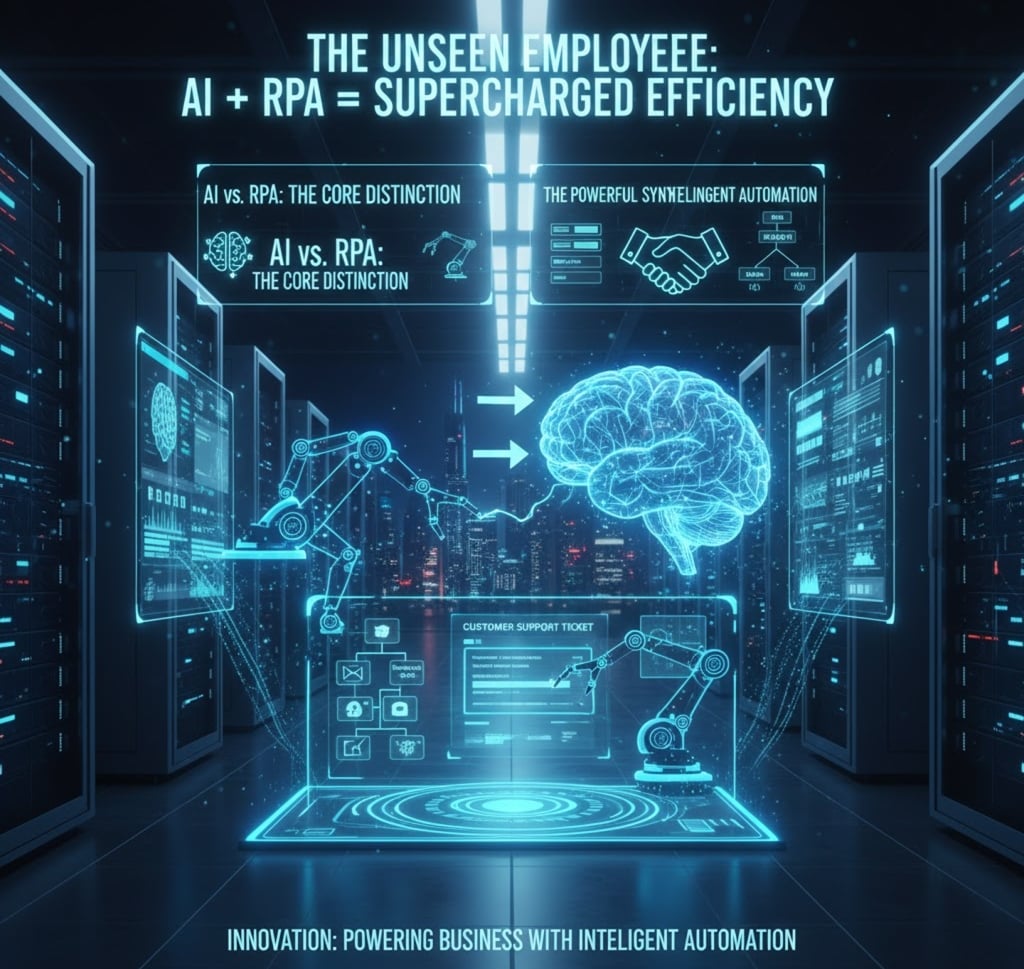The Unseen Employee: How AI and RPA Are Partnering to Supercharge Efficiency
Mr. Hunain Panjwani
10/13/20252 min read


SEO Idea: This post clarifies the distinction between AI and RPA and, more importantly, explains their powerful synergy. It highlights how Robotic Process Automation (RPA) handles repetitive, rule-based tasks while AI adds intelligence to handle more complex, cognitive functions, creating a powerful partnership for operational efficiency.
SEO Keywords: AI vs RPA, robotic process automation, intelligent automation, workflow automation, operational efficiency, back-office automation.
In the world of business process automation, two terms are often used interchangeably: Artificial Intelligence (AI) and Robotic Process Automation (RPA). While both are powerful technologies, they are fundamentally different. Think of RPA as the "hands" and "feet" that can mimic human actions on a computer, and AI as the "brain" that can learn and reason. The true power of automation is not in choosing one over the other, but in creating a partnership between them to form a new class of intelligent automation.
AI vs. RPA: The Core Distinction 🧐
Understanding the difference is the first step to leveraging their combined power.
Robotic Process Automation (RPA): RPA is a technology that uses software robots, or "bots," to automate repetitive, rule-based digital tasks. An RPA bot can mimic a human's actions on a computer screen. It can open applications, log in, copy and paste data, move files, and complete forms. It is excellent at following a predefined set of instructions. Example: An RPA bot can automatically download invoices from an email, extract the data, and enter it into an accounting system.
Artificial Intelligence (AI): AI is a broader field of computer science focused on creating systems that can perform tasks that typically require human intelligence. This includes learning, reasoning, problem-solving, perception, and natural language understanding. AI can make decisions and learn from new data. Example: An AI system can read an email and, based on its content, determine if it contains a support request, a sales lead, or spam.
To put it simply, RPA works with structured, predictable data and processes, while AI works with unstructured, unpredictable data and processes.
The Powerful Synergy of Intelligent Automation 🤝
The magic happens when RPA and AI are combined to create intelligent automation. The RPA bot performs the repetitive, manual tasks, and the AI component adds the cognitive power needed to handle more complex situations.
Consider the example of processing a customer support ticket.
Without AI: An RPA bot can automatically route a customer's email to a support agent. But if the email contains a complex issue or an attached document, the bot is stuck.
With AI: An AI system first analyzes the customer's email to understand the sentiment and categorize the issue. It can even read the attached document to extract key information. It then tells the RPA bot what to do with that information. The RPA bot can then automatically create a ticket, fill in the customer's details and the extracted information, and route the ticket to the correct department—or even provide a pre-written, personalized response.
This partnership is what drives significant gains in operational efficiency, especially in back-office automation and customer-facing processes. It frees human employees from tedious, data-entry tasks and allows them to focus on more complex, strategic work that requires human creativity and critical thinking.
The automated enterprise is not about replacing humans with machines; it's about partnering with them to create a more efficient, productive, and intelligent organization.
